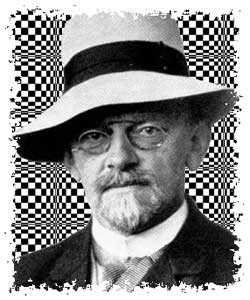The main application of tori to cryptography is to exchange keys more efficiently while preserving the same security standards.
In the Diffie-Hellman key-exchange one interchanges elements of the finite field $\mathbb{F}_q $ where $q=p^N $ is a prime-power of a large prime number $p $. If we call an element of the prime field $\mathbb{F}_p $ a pit (similar to bit when $p=2 $) then we can measure transmssions in pits. An element $h \in \mathbb{F}_q $ requires N pits, for we can write the finite field as the quotient of ring of polynomials $\mathbb{F}_p[x] $
$\mathbb{F}_q = \frac{\mathbb{F}_p[x]}{(f(x))} $
modulo an _irreducible_ polynomial $f(x) $ of degree N. Hence, any $h \in \mathbb{F}_q $ can be written as a polynomial of degree $< N $,
$h = a_1 + a_2 x + \ldots + a_N x^{N-1} $
with all $a_i \in \mathbb{F}_p $, so we can represent $h=(a_1,a_2,\ldots,a_N) $ as N pits. Now, we are going to limit this number of pits (from $N $ to about $\phi(N) $ where $\phi $ is the Euler totient function, that is the number of integers smaller than N and coprime to it) by restricting the elements $h $ to be transfered to a subgroup of the group of units of the finite field $\mathbb{F}_q^* $ while not compromising on the security of the public key system (the large order of the basic element $g \in \mathbb{F}_q^* $ of which $h $ is a power).
 To see that this is indeed possible, let us consider the easiest case (that of $N=2 $) and keep the discussion tori-free (those of you who know more will realize that Hilbert’s Satz 90 is never too far away…). If $q=p^2 $ then the order of the cyclic group $\mathbb{F}_q^* $ is $p^2-1 = (p-1)(p+1) $ so in order to get a safe system let us choose the large prime number $p $ such that also tex/2=r $ is a prime number.
To see that this is indeed possible, let us consider the easiest case (that of $N=2 $) and keep the discussion tori-free (those of you who know more will realize that Hilbert’s Satz 90 is never too far away…). If $q=p^2 $ then the order of the cyclic group $\mathbb{F}_q^* $ is $p^2-1 = (p-1)(p+1) $ so in order to get a safe system let us choose the large prime number $p $ such that also tex/2=r $ is a prime number.
Right, now define $T_2 $ to be the subgroup of $\mathbb{F}_q^* $ of order $p+1 $ and let $g $ be a generator of it that we will use in the Diffie-Hellman exchange. Can we describe the element of $T_2 $ (our torus in disguise)? Take $d \in \mathbb{F}_p^* $ a non-square element, then we can write
$\mathbb{F}_q = \mathbb{F}_p(\sqrt{d}) $ and $T_2 = { a+b\sqrt{d}~:~(a+b\sqrt{d})^{p+1}=1 } $ (here, $a,b \in \mathbb{F}_p $). But we claim that
$~(a+b\sqrt{d})^p = a -b \sqrt{d} $. Indeed, $a^p=a,b^p=b $ and from Fermat’s little theorem we deduce that
$ -1 = (\frac{d}{p}) \equiv d^{\frac{p-1}{2}}~mod(p) $
where the middle term is the Legendre symbol which is equal to -1 because d was a non-square modulo p. That is, we can then write $T_2 $ as the algebraic variety of dimension one defined over $\mathbb{F}_p $ and given by the equation
$T_2 = { a+b\sqrt{d} \in \mathbb{F}_q^*~\mid~(a,b) \in \mathbb{F}^2~:~a^2-db^2=1 } $
Because $T_2 $ is of dimension one over $\mathbb{F}_p $ we can hope that most of its elements can be represented by just one pit (instead of the two pits necessary to represent them as elements of $\mathbb{F}_q $). This is indeed the case, for we have explicit maps (in geometric terms, these maps show that $T_2 $ is a rational variety)
$j~:~\mathbb{F}_p \rightarrow T_2~\quad~j(a) = \frac{a+\sqrt{d}}{a-\sqrt{d}}=\frac{a^2+d}{a^2-d}+\frac{2a}{a^2-d}\sqrt{d} $
which has a well-defined invers on the complement of ${ 1,-1 } $
$f~:~T_2 – { 1,-1 } \rightarrow \mathbb{F}_p~\quad~f(a+b\sqrt{d}) = \frac{1+a}{b} $
From the right-hand description of $j(a) $ one deduces that indeed we have that $f(j(a))=a $. Using this we can indeed compress the Diffie-Hellman exchange by a factor 2.
Instead of giving you the element $g^a \in T_2 $ computed using my secret number a, I’ll send you (using only one pit) the number $f(g^a) \in \mathbb{F}_p $. On this number, you can apply the j-function to recover $g^a $ and then compute the common key $~(g^a)^b = g^{ab} $ using your secret number b). Still, we didnt compromise on security because we used the most difficult elements around in $\mathbb{F}_q^* $. By going to higher dimensional tori one can even improve on the efficiency rate!
Comments